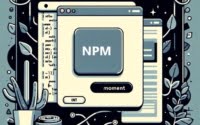Update NPM: How to Easily Upgrade to the Latest Version

Struggling to keep your Node.js and npm versions up-to-date? At IOFLOOD, we’ve faced this task head-on, which led us to write this guide on how to update Node.js and npm. By following these simple steps, you can ensure that your development environment is always running on the latest and most secure releases, helping you stay ahead of compatibility issues and security vulnerabilities.
This guide will navigate you through the process of updating both, ensuring you’re leveraging the latest features and security patches. We’ll cover everything from the basic steps for beginners to more advanced methods for experienced users. By the end of this guide, you’ll be equipped with the knowledge to keep your Node.js environment up-to-date and secure.
Ready to bring your development environment up to speed? Let’s make updating Node.js and npm a breeze together!
TL;DR: How Can I Update Node.js and NPM to Their Latest Versions?
To update Node.js and NPM to their latest versions, use the commands
npm install -g npm@latestandnvm install node.
For example:
npm install -g npm@latest
nvm install node
# Output:
# 'npm@latest' installed
# Node.js latest version installed
This simple sequence of commands ensures that you’re running the latest versions of both NPM and Node.js, granting you access to the newest features and important security patches.
In the first command, npm install -g npm@latest, we’re telling NPM to update itself to the latest version globally. The second command, nvm install node, leverages Node Version Manager (NVM) to install the most recent version of Node.js.
These commands are your quick fix to staying current. However, for a deeper dive into the nuances of updating and managing versions, keep reading for more detailed instructions and advanced methods.
Table of Contents
Intro to Updating NPM and Node.js
Embarking on the journey to update NPM and Node.js might seem daunting at first, but with the right tools and a bit of guidance, it becomes a straightforward process. This section is designed to help beginners navigate through the basics of updating NPM and Node.js using NVM (Node Version Manager), a popular tool that simplifies the version management of Node.js.
Step 1: Installing NVM
Before updating Node.js, you need to have NVM installed. NVM allows you to easily switch between different Node.js versions without affecting the entire system.
curl -o- https://raw.githubusercontent.com/nvm-sh/nvm/v0.39.1/install.sh | bash
# Output:
# Downloading and installing nvm
# Close and reopen your terminal to start using nvm
This command downloads and installs NVM. The output message prompts you to close and reopen your terminal, which is necessary for NVM to function properly.
Step 2: Installing the Latest Node.js Version Using NVM
With NVM installed, you can now install the latest version of Node.js. This is crucial for accessing new features and ensuring your projects are secure.
nvm install node # "node" is an alias for the latest version
# Output:
# Downloading and installing node [version]
# Now using node [version]
This command fetches and installs the latest version of Node.js. The output confirms the version installed and indicates that this version is now active. Using the latest version of Node.js can significantly enhance your development experience by providing access to the latest features and security improvements.
Step 3: Updating NPM to the Latest Version
Finally, to ensure that NPM itself is up-to-date, you can use the following command:
npm install -g npm
# Output:
# Updated to npm [version]
This command updates NPM to the latest version available. The output will specify the version to which NPM has been updated. Keeping NPM updated is essential for managing your Node.js packages effectively and securely.
By following these steps, beginners can easily update Node.js and NPM, ensuring they are using the most current versions. This not only enhances your development experience but also secures your projects with the latest features and patches.
Advanced Node Management
When you’re ready to take your Node.js and NPM management skills to the next level, exploring advanced version managers like n and nvm-windows becomes essential. These tools offer a more nuanced control over your development environment, especially when working across different projects or when needing to test against multiple Node.js versions.
Why Use Version Managers?
Version managers streamline the process of switching between Node.js versions, allowing developers to easily adapt to the requirements of different projects. They also simplify the update process, ensuring you can quickly move to the latest versions or roll back if necessary.
Switching with n
For macOS and Linux users, n is a powerful version manager that simplifies the experience. Here’s how to switch to a specific Node.js version using n:
n 14.17.0
# Output:
# installing : node-v14.17.0
# mkdir : /usr/local/n/versions/node/14.17.0
# fetch : https://nodejs.org/dist/v14.17.0/node-v14.17.0-linux-x64.tar.xz
# installed : v14.17.0 (with npm 6.14.13)
This command instructs n to install and switch to Node.js version 14.17.0. The output details the installation process, including the creation of a directory for this version and the fetching of the necessary files from the Node.js repository. By specifying the version, you gain precise control over your development environment, ensuring compatibility and stability for your projects.
Managing Versions with nvm-windows
For Windows users, nvm-windows provides a similar level of control. Switching between Node.js versions is just as straightforward:
nvm use 12.18.3
# Output:
# Now using node v12.18.3 (64-bit)
This command sets the Node.js version to 12.18.3 for the current terminal session. The output confirms the switch, indicating that you’re now using the specified version. nvm-windows offers a tailored experience for Windows environments, making it an invaluable tool for developers working on this platform.
By leveraging version managers like n and nvm-windows, you gain the flexibility to work with multiple Node.js versions, enhancing your ability to meet project requirements and explore new features. These tools represent a significant step up from basic version management, offering a more dynamic and controlled development environment.
Other Node.js Management Tools
For experts looking to push the boundaries of Node.js and NPM management, containerization with Docker and using alternative package managers like Yarn present intriguing possibilities. These methods not only offer a different approach to managing Node.js environments but also come with unique advantages and considerations.
Embracing Containerization with Docker
Docker provides an isolated environment for your applications, ensuring that they run consistently across different machines. By containerizing your Node.js application, you can sidestep many of the challenges associated with version management.
# Sample Dockerfile for Node.js application
FROM node:14.17.0
WORKDIR /app
COPY . .
RUN npm install
CMD ["node", "app.js"]
# Output:
# Successfully built [container ID]
# Successfully tagged node-app:latest
This Dockerfile creates a Docker image based on Node.js version 14.17.0. The FROM directive specifies the Node.js version, ensuring that your application uses this specific version, regardless of the Node.js version installed on the host machine. The output confirms the successful build and tagging of your Node.js application image, providing a stable and consistent environment for deployment.
Leveraging Yarn as an Alternative
Yarn is a powerful package manager that can serve as an alternative to NPM. It offers faster package installation and more reliable dependency management. To update your Node.js project using Yarn, you first need to ensure Yarn is installed.
yarn --version
# Output:
# 1.22.10
This command checks the installed version of Yarn. The output displays the current Yarn version, indicating that Yarn is ready to manage your project’s dependencies. With Yarn, you can easily update the dependencies of your Node.js project, ensuring they are up-to-date and secure.
Deciding Between Docker and Yarn
Both Docker and Yarn offer distinct advantages. Docker excels in creating consistent environments across development and production, minimizing “it works on my machine” issues. Yarn shines in dependency management, offering speed and reliability beyond what NPM provides. The choice between Docker and Yarn depends on your project’s specific needs and your development workflow preferences.
By exploring these alternative approaches, expert developers can find innovative solutions to Node.js and NPM version management, enhancing project consistency and dependency reliability.
Smooth Updates: Troubleshooting Tips
While updating NPM to its latest version is generally straightforward, developers occasionally encounter hurdles. Understanding how to navigate these challenges ensures a seamless update process. This section delves into common issues like PATH problems, version mismatches, and permission issues, offering practical solutions.
Resolving PATH Issues
One frequent issue is the system’s inability to recognize updated versions due to PATH problems. This typically occurs when the Node.js and NPM executables are not correctly located in the system’s PATH.
echo $PATH
# Output:
# /usr/local/bin:/usr/bin:/bin:/usr/sbin:/sbin
The output displays the directories included in your PATH. If the directory where Node.js and NPM are installed isn’t listed, you’ll need to add it. This ensures that your terminal can locate the Node.js and NPM executables.
Addressing Version Mismatches
Version mismatches between Node.js and NPM can lead to compatibility issues. To check your versions:
node -v
npm -v
# Output:
# v14.17.0
# 6.14.13
The output shows the installed versions of Node.js and NPM. If there’s a significant version gap, updating one or both to compatible versions is advisable. This can prevent potential conflicts and ensure that your development environment runs smoothly.
Overcoming Permission Issues
Permission issues often arise when trying to update NPM without sufficient privileges. This is common when using global flags (-g) without the necessary permissions.
sudo npm install -g npm@latest
# Output:
# /usr/local/bin/npm -> /usr/local/lib/node_modules/npm/bin/npm-cli.js
# + npm@latest
Using sudo grants temporary administrative privileges for the update, resolving the permission issue. The output confirms the successful update of NPM to the latest version, ensuring that you have the latest features and security patches at your disposal.
By addressing these common issues, developers can ensure a smooth and successful update process. Keeping NPM and Node.js up-to-date is crucial for maintaining the security and efficiency of your development environment. Armed with these troubleshooting tips, you’re well-equipped to tackle any challenges that may arise during the update process.
The Essentials of Updating NPM
Understanding the fundamentals behind the need to update NPM and Node.js is crucial for every developer. These updates are not just about having the latest shiny tools; they’re about ensuring the security, efficiency, and reliability of your development environment.
Why Updates Matter
Updates to Node.js and NPM often include critical security patches that protect your projects from vulnerabilities. Additionally, with each update, developers gain access to new features that can improve the efficiency of development workflows and enhance performance.
Node.js and NPM: A Symbiotic Relationship
Node.js, as a runtime environment, and NPM, as a package manager, share a symbiotic relationship. NPM relies on Node.js to run, and Node.js projects depend on NPM for managing packages. This interdependency means that keeping both updated ensures a harmonious development environment.
node -v
npm -v
# Output:
# v16.13.0
# 8.1.0
The above command and its output demonstrate checking the current versions of Node.js and NPM installed on your system. Knowing your versions is the first step in understanding whether an update is necessary. This command is essential for developers to ensure that they are working with compatible versions of both tools, thereby avoiding potential issues in project dependencies and executions.
The importance of updates cannot be overstated. They are not merely about accessing the newest features but are a critical component of maintaining a secure and efficient development ecosystem. By understanding the relationship between Node.js and NPM, developers can better appreciate the significance of regular updates and the role they play in the broader context of web development.
Managing Dependencies Post-Update
Updating Node.js and NPM can have a significant impact on your project dependencies. It’s crucial to understand how to manage these dependencies effectively to ensure your projects remain stable and functional after an update. This section explores the strategies and tools that can assist in this process.
Semantic Versioning: A Safety Net
Semantic versioning, or SemVer, is a versioning system that aims to convey meaning about the underlying changes in a release through the version number itself. It’s a critical concept to grasp when managing dependencies.
npm view lodash version
# Output:
# 4.17.21
The command above retrieves the current version of the lodash package. Understanding the structure of version numbers can help you make informed decisions about updating dependencies. For instance, a major version change (indicated by the first number) might introduce backward-incompatible changes, requiring more thorough testing.
Dependency Management Tools
Several tools can help manage and update project dependencies, ensuring compatibility and stability. npm-check-updates is a utility that upgrades your package.json dependencies to the latest versions, respecting SemVer.
npm install -g npm-check-updates
ncu -u
npm install
This sequence of commands installs npm-check-updates, updates the package.json file with the latest versions of the dependencies, and then installs those updates. It’s a streamlined way to keep your dependencies current.
Further Resources for NPM Mastery
To deepen your understanding of NPM and dependency management, consider exploring the following resources:
- The official NPM Documentation includes its commands and how to manage package dependencies.
NodeSource Blog offers insightful articles on dependency management and updates with Node.js and NPM.
The npm Blog: Provides updates, announcements, and tutorials directly from the team behind NPM.
By leveraging these resources and tools, you can ensure that your projects remain stable and up-to-date, even as you update Node.js and NPM to their latest versions. Understanding and managing project dependencies is a critical skill in maintaining the health and success of your development projects.
Recap: Updating Node.js and NPM
In this comprehensive guide, we’ve navigated the crucial process of updating Node.js and NPM to their latest versions, ensuring that developers can leverage the newest features and most important security patches.
We began with the basics, illustrating the simple commands needed to update NPM and Node.js for beginners. We then advanced to more sophisticated methods, exploring the use of version managers like n and nvm-windows for those ready to take their Node.js management skills to the next level. For experts, we delved into alternative approaches such as containerization with Docker and using Yarn as an alternative package manager, highlighting the unique benefits and considerations of each method.
Along the way, we tackled common challenges that developers might face during the update process, such as PATH issues, version mismatches, and permission problems, providing solutions to help overcome these obstacles. We also emphasized the importance of understanding the fundamentals behind Node.js and NPM updates, including the symbiotic relationship between the two and how updates contribute to a secure and efficient development environment.
| Approach | Pros | Cons |
|---|---|---|
Version Managers (n, nvm) | Simplify switching between Node.js versions | Requires initial setup |
| Docker | Ensures consistent environments | Learning curve for containerization |
| Yarn | Fast dependency management | Different from NPM, requires adaptation |
Whether you’re just starting out or looking to deepen your understanding of Node.js and NPM, we hope this guide has provided you with valuable insights into updating and managing your development environment. Keeping Node.js and NPM updated is not just about accessing the latest features; it’s about ensuring the security and efficiency of your projects.
With the knowledge and tools shared in this guide, you’re now better equipped to maintain a modern, secure, and efficient development environment. Remember, regular updates are key to leveraging the full potential of Node.js and NPM. Happy coding!

